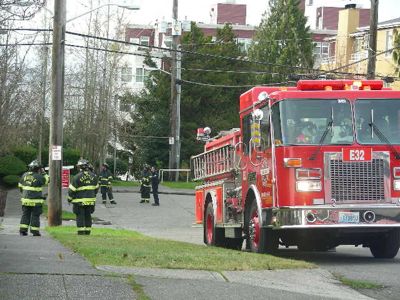
1:11 PM UPDATE: WSB contributing photographer Christopher Boffoli got to the scene on Hudson west of 42nd first (and photographed part of the actual fire, as seen above and below) and reports:
Engine 32 and Ladder 11 are on the scene and a bunch of firefighters are watching the wires burn. Even they were scratching their heads about how weird it is. One firefighter told me that when they rolled up, a length of wire a block long was on fire. For some reason the wires are so hot that the insulation is burning off. They said there is nothing they can do but to let the insulation burn out. (You obviously cannot douse the wires with water). They said that afterward they have to watch them because the fire can weaken the metal and they can fatigue and come down.

ORIGINAL POST AT 12:46 PM: “Wires down” — That’s the label for a fire call happening right now in the 5000 block of 42nd. Heard some scanner talk about possibly restricting some access in the area; off to investigate. 12:59 PM UPDATE: Hudson blocked west of 42nd. Two engines on scene, including the one shown below:


| 23 COMMENTS